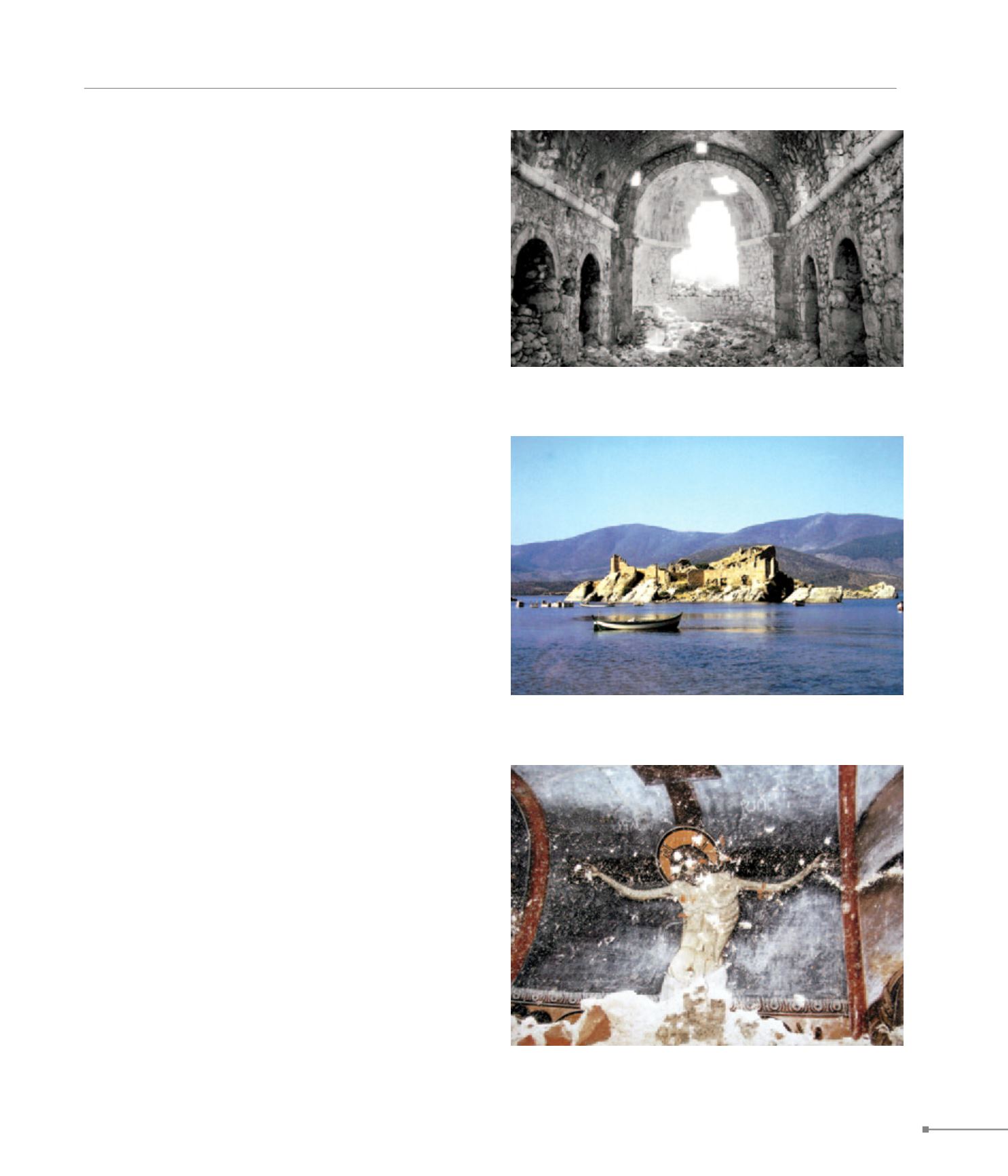
Küçük Tavşan Adası.
Kapıkırı. Herakleia under Latmus or Latros.
COASTLINE OF ASIA MINOR AND EASTERN THRACE
299
549. Latmus, Yediler, wall painting (Λάτμος, Yediler, τοιχογραφία)
549. Herakleia under Latmus (Ηράκλεια Λάτμου)
546. K
üçü
k Tav
ş
an Adas
ı
, church (Kü
ç
ük Tav
ş
an Adas
ı
, εκκλησία)
546.
K
üçü
k Tav
ş
an Adas
ı
.
On the small island called Aghioi Apostoloi in the 19th c., sur-
vives a three-aisled, barrel-vaulted basilica with three apses
that can be dated to circa 600. There are remnants of frescoes
from various periods, the most recent from the 13th c.
547.
Varvil Liman
ı
. Bargylia.
Three Early Christian basilicas and a structure identified as a
“palace” (possibly an episcopal palace), have been detected.
On the S hill of the city stands a Byzantine fortress.
548.
Kuren, K
ı
y
ı
k
ış
lac
ı
k. Iasos.
There are ruins of three Early Christian basilicas with mosaic
floors. After the destruction of the three-apsed basilica on the
acropolis, a centrally planned building was established above
its E section in the 10th (?) c. Next to the extra muros basilica
are remnants of the episcopal palace. To the N of the promon-
tory are the remains of Byzantine fortifications.
549.
Kap
ı
k
ı
r
ı
. Herakleia under Latmus or Latros.
Herakleia was built at its current site in the 4th c. BC. The earlier
Latmo lies 1 km to the E. Originally Herakleia was located on a
bay and served as a harbour. After the 13th c., with the gradual
deposits from the river Maeander, the bay was turned into a la-
goon (Bafa G
ö
l
ü
). In the mid-7th c. monks that had to abandon
Sinai and Arabia settled on Mount Latmus. Three monasteries
and hermitages in caves are mentioned in the Life of Saint Paul
the Younger (circa 969). With the domination of the Seljuqs
(1071), the inhabitants of Herakleia fled to Menet Ada Island, to
a location named Melanoudion. Remains of a three-aisled ba-
silica and of a bishop’s palace (?) date from the Early Christian
era. Remnants from the same period also exist at Ioniopolis,
opposite Melanoudion. The church on Menet Ada Island, the
triconch church at the Kiliselik monastery, and the basilicas with
piers at the Byzantine settlement of Latmus and on the island
of
İ
kiz Ada are Mid-Byzantine in date. Of particular importance
are the remains of churches and monasteries, as well as the
remnants of frescoes from the time of the ruling Laskaris family,
emperors of Nicaea, dating from the 13th c., such as the cross-
in-square conventual churches on the islands of Kahve Asar
Ada and Kap
ı
k
ı
r
ı
Ada. Fragments of wall-paintings survive in the
caves of Pantokrator (9th c.), Stylos (12th-13th c.), Latmus (13th
c.), and Yediler (circa 1200).


